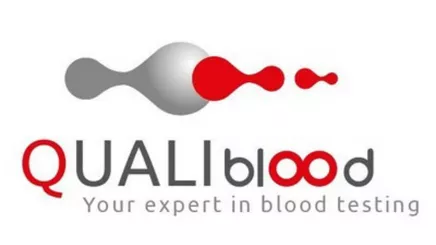22,000 cases of thrombosis occur every year in Europe as a result of the use of combined oral contraceptives. In Belgium, approximately 2 such cases occur every day! One of the main challenges for healthcare professionals is therefore to identify women at risk.
The test developed in Namur is a new tool for meeting this challenge. For several years now, Jonathan Douxfils, CEO of the QUALIblood spin-off and Professor in the Pharmacy Department at UNamur, has been working on the development of a blood test designed to assess the risk of thrombosis in young women who are taking or who wish to take a contraceptive pill, as well as in post-menopausal women who wish to start hormone replacement therapy.

Although the principle of this test was initiated over 20 years ago, it quickly fell into disuse due to a lack of standardisation that led to unacceptable variability, making the results uninterpretable. Professor Jonathan Douxfils and his team therefore worked on optimising the method in order to validate it and make the results reliable so as to meet regulatory requirements in terms of analytical and clinical performance.
The results of this research are largely the result of the work of Laure Morimont, carried out as part of an in-company doctorate with Walloon funding of the Win4doc type.
A single test to establish a woman's eligibility for the contraceptive pill
At present, several guidelines offer support to the medical profession in adapting contraception to the patient's profile. However, these strategies are based on epidemiological data and do not allow accurate assessment of the risk of venous thromboembolism on an individual basis. The test developed by the QUALIblood and UNamur teams, which provides an accurate, reliable and reproducible result, makes it possible to guide medical prescriptions more precisely, so that the right contraception can be given to the right patient.
The result provided by the test, known as nAPCsr (Normalized activated protein C sensitivity ratio), takes the form of a score ranging from 0 to 10. The higher the score, the greater the risk of thrombosis.
In practice, for the patient, it involves a simple blood test on medical prescription. At present, the test is not eligible for reimbursement by the INAMI (the Belgian social security system). It is therefore payable by the patient or the laboratory, at a cost of around €50. However, a partnership is underway with a major player in the in vitro diagnostics sector to make the test available on an automated platform, enabling it to be marketed throughout Europe and then worldwide. This would make it easier to use and implement in routine clinical practice, which would ultimately reduce the associated cost and even enable health insurers to make a contribution.
Activated protein C resistance as a marker of thrombosis risk
Resistance to activated protein C (APC), considered to be a dysfunction in blood coagulation, is an independent risk factor for thrombosis. Although several tests have been developed, it is the APC resistance test based on endogenous thrombin potential (ETP) that has proved the most sensitive for assessing the changes induced by combined oral contraceptives on the coagulation system.
"We have succeeded in demonstrating the analytical performance of the ETP-based APC resistance test, as well as its suitability for routine clinical use as a biomarker for characterising the risk of venous thromboembolism in women on contraception", says Laure Morimont. These convincing results are regularly selected for oral presentation at international conferences for haematologists and gynaecologists alike.
Ongoing and future collaborations with several hospitals and laboratories
The test is already being used by various players in the pharmaceutical industry as part of the development of new contraceptives. In fact, this test is a regulatory requirement of the European Medicines Agency as part of the assessment of the thrombogenic profile of combined oral contraceptives in clinical trials.
To enable it to be used in clinics, a partnership has been developed with the CHC MontLegia hospital in the Liège region. Other collaborations are taking shape with clinical biology laboratories in the Namur region, so that gynaecologists can have access to this prescribing aid. Discussions are also underway with a major laboratory in the in vitro diagnostics sector to roll out the test on a wider scale.
Towards other applications for the test
The use of a combined oral contraceptive is not the only situation that can lead to hormonal coagulopathy in women. When they stop using contraception and become pregnant, their thrombotic risk increases further, as the haemostatic balance shifts towards a prothrombotic state in order to limit haemorrhagic complications during childbirth. In the continuum of women's lives, the menopause arrives, and the associated symptoms may lead to the use of hormonal treatment, also associated with an increased risk of thrombosis.
Also related to hormones, hormone-dependent breast cancer is one of the most common cancers in women, and the use of tamoxifen has been identified as an additional risk factor for thrombosis in these patients. With this in mind, there is clearly an interest in using nAPCsr to monitor women's coagulability status during these different periods of life. Finally, the field of application of this test goes beyond hormone-induced prothrombotic states and could be relevant in other pathologies.
As we can see here, doctorates in industry often lead to excellent collaborations and achievements between the worlds of business and academia. Laure Morimont's thesis, produced in synergy between UNamur's Department of Pharmacy and the QUALIblood spin-off, is a fine example.
